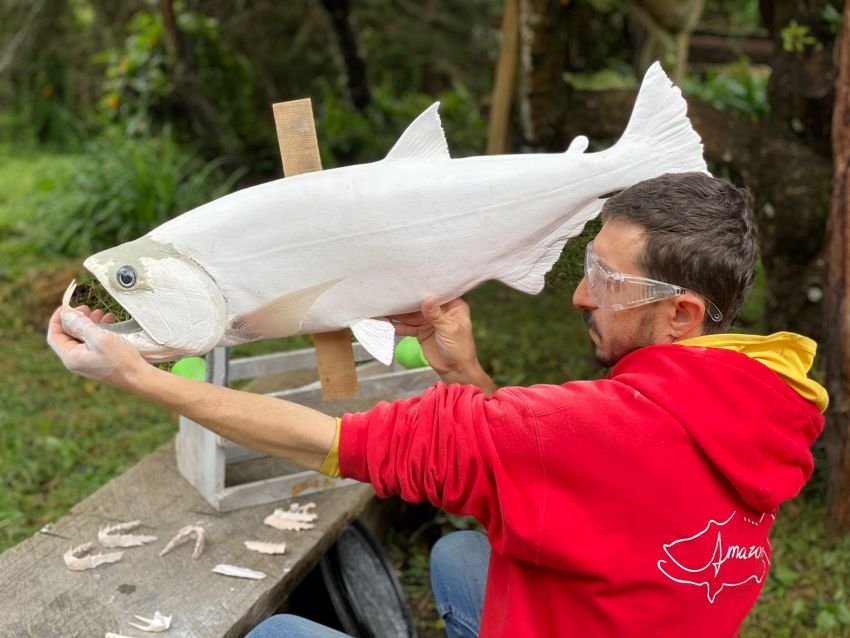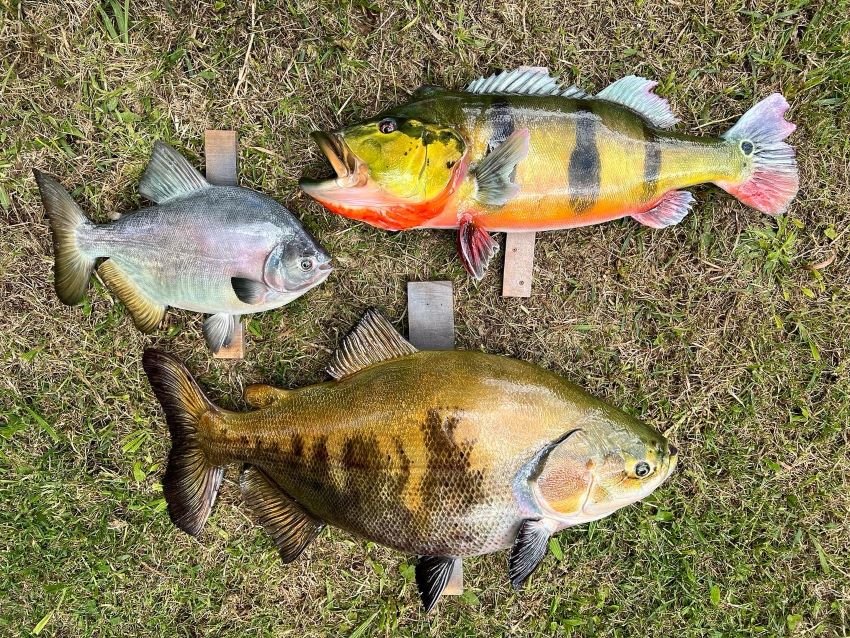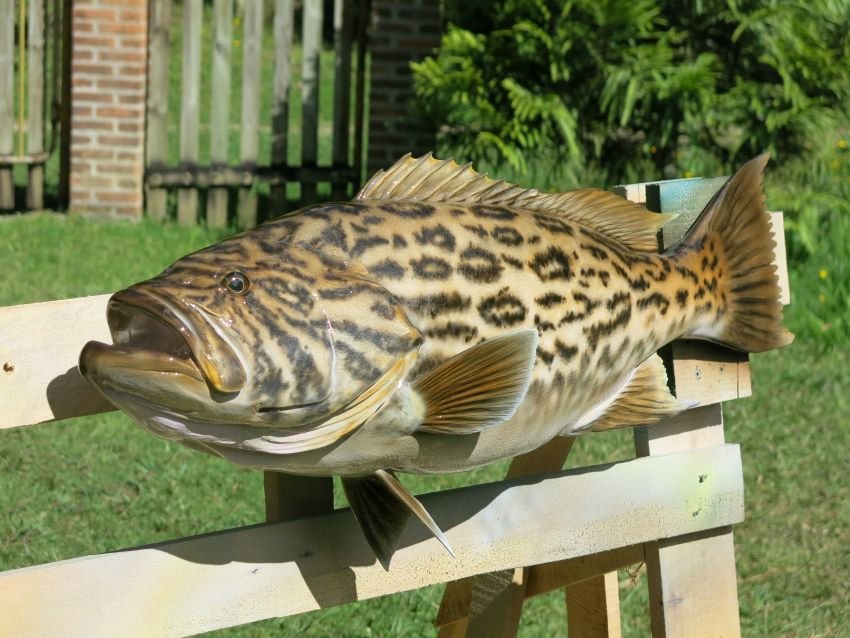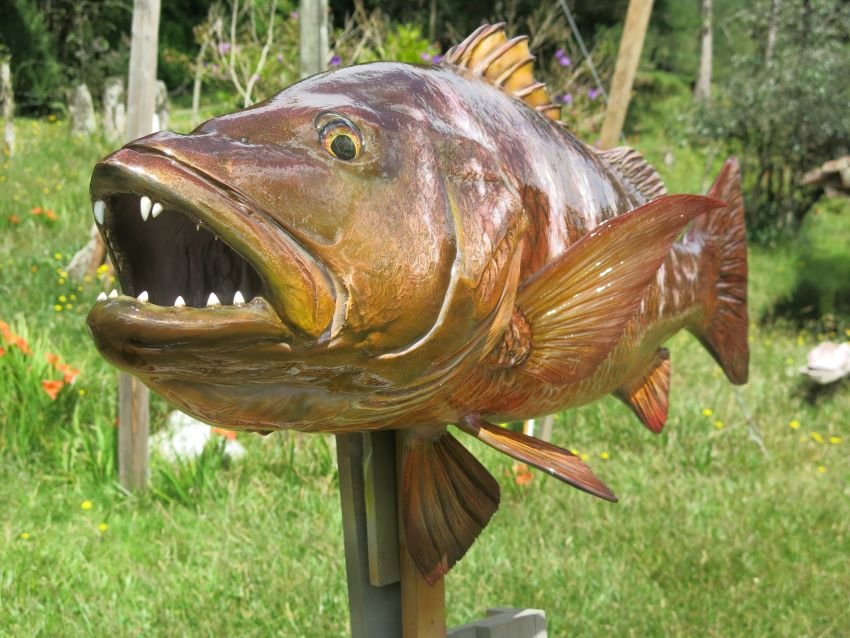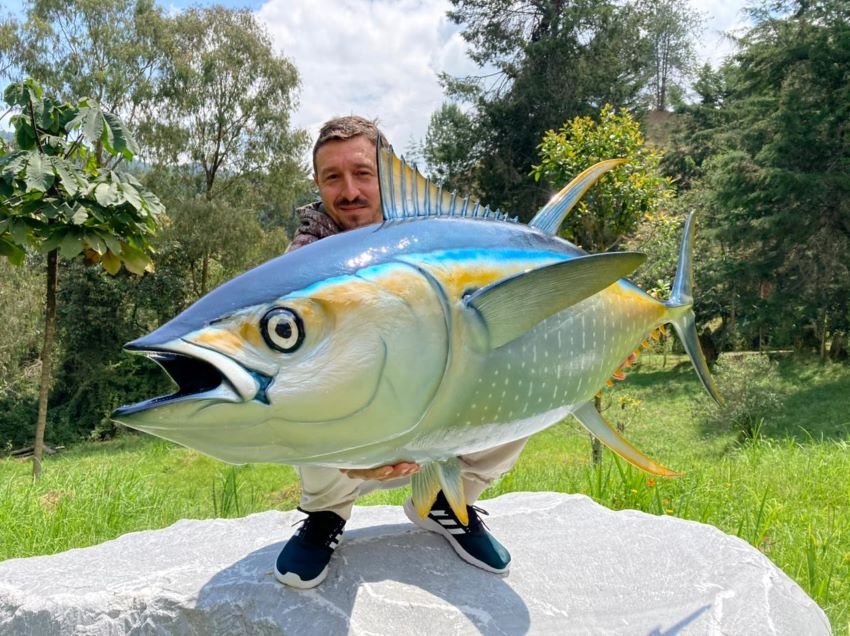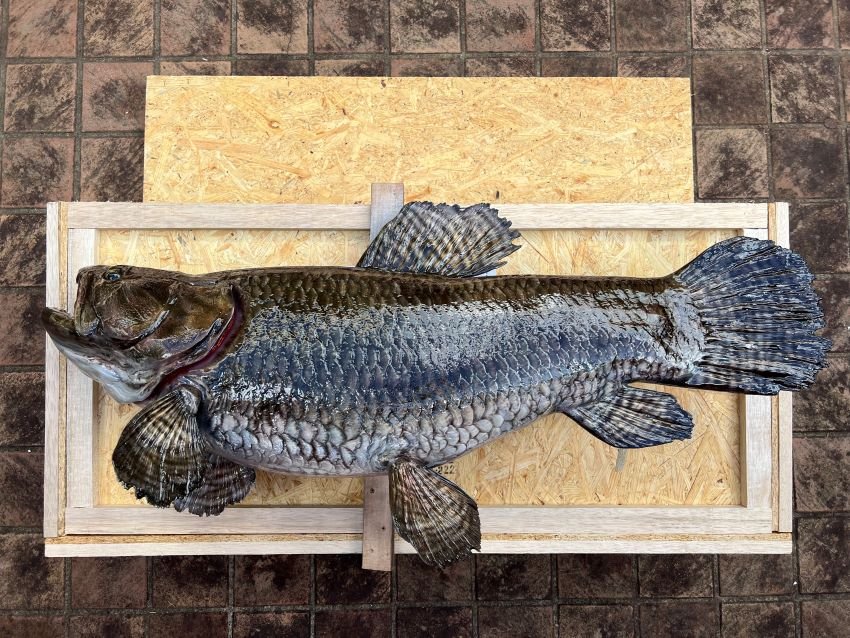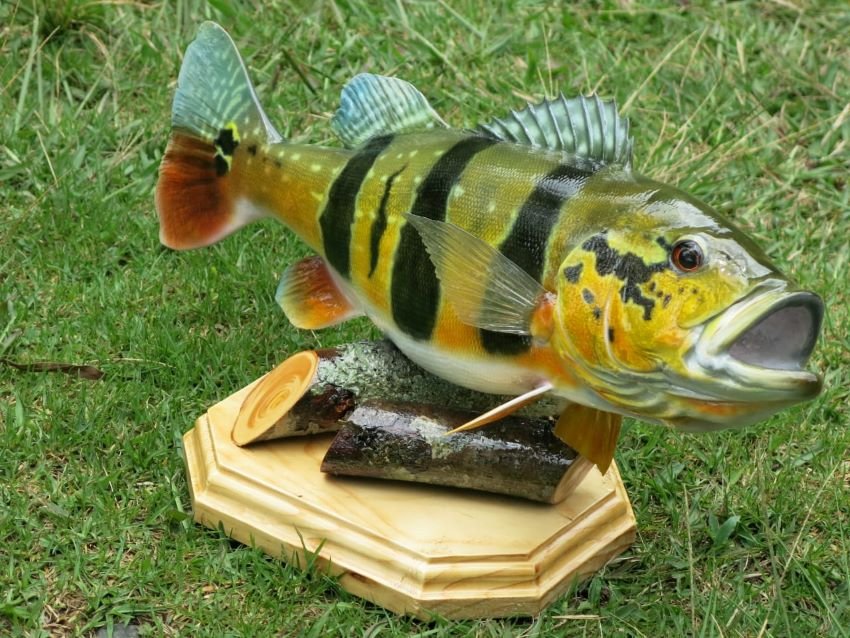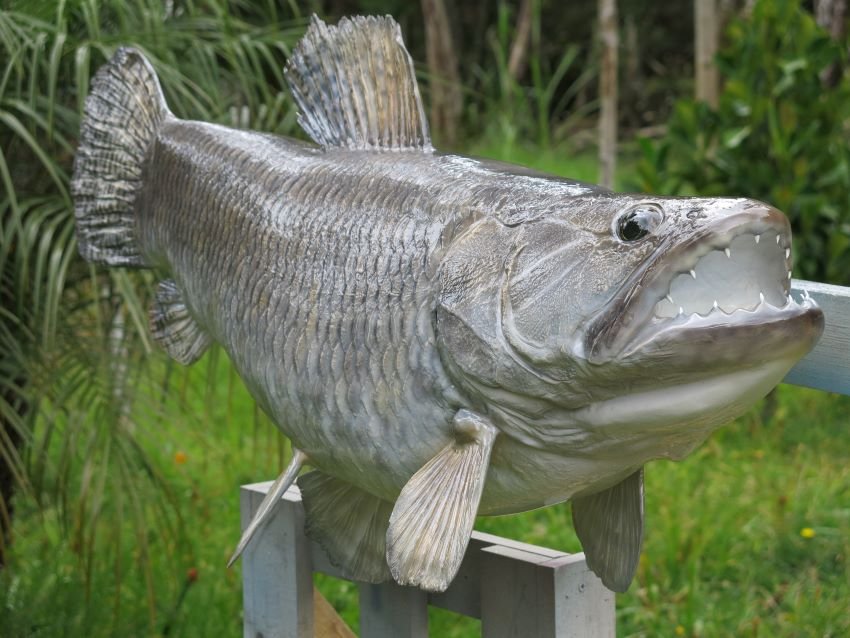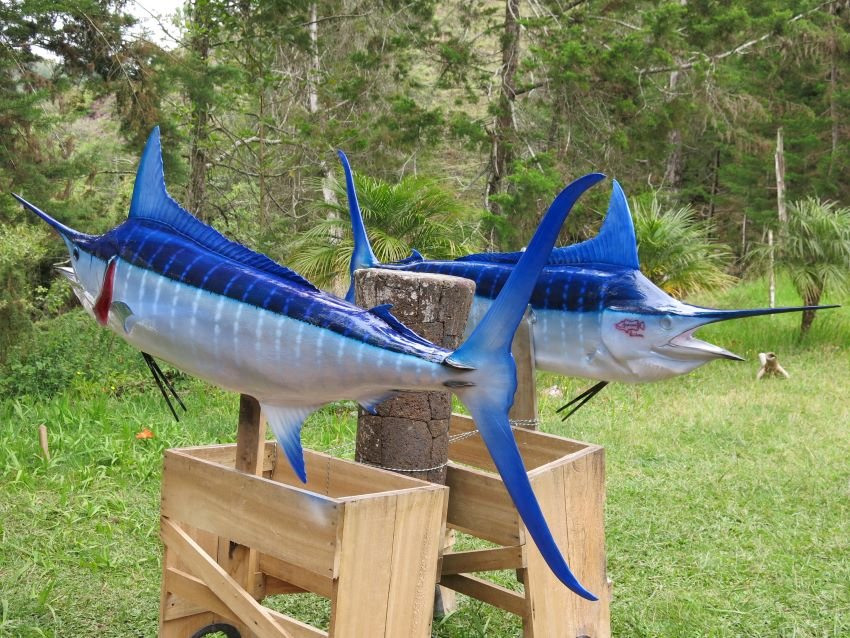Germán Pérez: Living at the Intersection of the Amazon and Artistry
The waters of South America gave birth to our exotic fishing travel passion, and we’ve commemorated those earliest trips with replicas of two peacock bass, and later added a payara that sits above my home desk. They are lasting reminders of how special and fragile those fisheries may be. After scouring social media for the best and most innovative replica work, we could not help but notice Amazona Wild Art. Master craftsman Germán Pérez produces highly individualized peacock bass that look like they just came out of one of South America’s many fertile rivers, and he doesn’t stop there – his work with other exotics (and more common species) is beyond exceptional. I was curious to know how he got started and why he pursues this passion. Kermett Adams vouched for me, and Germán was kind enough to produce a lengthy set of answers. Here’s his story in his own words:
HPFC: Where were you raised and where do you live now?
PÉREZ: I was born on the 6th of June 1978 in Medellín-Colombia, in the bosom of a family of peasant and middle class origin, from which I have inherited that interest for nature and the beauties that a country like Colombia has. I have lived almost all my life in Medellín, but for the last few years I have been living in a nearby municipality called El Retiro, where I live with my wife Yenny and my dog Luna. There I have my art workshop, the fish molds, and where the works of art that I have in process rest.
HPFC: How did you get involved with fishing art?
PÉREZ: My life has been characterized by a restless and curious nature, always wanting to discover new frontiers, always looking forward to explore, but there are two activities that have determined my life both professionally and personally: fishing and art. Fishing is a taste that was instilled in me mainly by my brother Carlos, may he rest in peace, who was a very enthusiastic sport fisherman. But from an early age I also developed a taste for fishing on my own. I have a memory as a child of sitting in a punch bowl full of water and casting a rope into the water in the style of a fisherman. I was 3 years old and that is the first memory I have of my taste for fishing. Art, on the other hand, is a way of life that I have discovered on my own. I don't have an artistic streak in my family, so the interest in painting and sculpture that characterizes me is a result of the discovery of my professional horizons. As I mentioned before, my family is of peasant origin and that kept me in constant contact with the countryside, in the northern areas of Antioquia-Colombia, which is characterized by milk production. And that is what my first drawing was about: a simple cow that I drew when I was 3 years old. Hence my taste for drawing the countryside, ecosystems and nature.
Since I became an art professional, I have focused on sculpture, and my taste for fishing led me to the process of taxidermy, where I created a replica of a fish and placed the skin on top of it to make it look as real as possible. But the ecological cost was very high, and each work of art meant the death of a fish. My ecological artistic sense made me look forward and innovate new practices to make the art pieces and the solution was fiberglass. We are pioneers in Colombia in this type of process, where a mold is taken from a fish, and from that mold several replicas are extracted in fiberglass. Only one fish dies, from which the mold is made, and each replica that is made saves the life of a fish. Now that I am 44 years old and have matured artistically, finding again a passion in ecological sculpture, I have discovered the most advanced step in the creative process of Amazona: to make an animal from scratch, by means of a sculpture, then, from that sculpture a mold is taken, and replicas can be produced in fiberglass. This method saves nature as a whole, as no animal dies today in the sculpting process.
HPFC: Did you have a mentor or teacher? Or are you self-taught?
PÉREZ: When I was 3 years old I made my first drawing, and that same year sometime later my parents discovered me fishing in a bucket full of water with a stick and a rope. Since I was very young I already had in my spirit the art and fishing and I was beginning to discover it, my parents always supported me taking me to workshops and art courses, when I finished school I entered to study at the Instituto de Bellas Artes in the city of Medellin where I graduated as a Master in Plastic Arts with emphasis in sculpture, the subjects that most attracted my attention were always sculpture and painting.
I had a special teacher who knew how to guide me, his name was Javier Restrepo, unfortunately he passed away, but he knew how to give me a lot of light in many artistic aspects and he was always one of the mentors that I admired and respected the most.
HPFC: Do you deal in all species, or just those native to Amazonia?
PÉREZ: Being a native of Colombia, it is impossible to deny that I have been permeated throughout my life by the river and sea species endemic to our country, but I have always been a passionate fisherman, which has allowed me to appreciate the undisputed beauty of all the fish and animals that exist in the world, our first molds were made from native fish of the Amazon, such as the peacock bass/tucunaré. Amazona has grown and today we make species that inhabit almost the whole world, we have a great diversity of freshwater and saltwater fish, but we not only make fish today but several different species of animals, elephants, whales, frogs, crocodiles, etcetera, in Amazona we are lovers and deep admirers of nature and all its beauty, we would like to try to portray it in the best way and to be able through art to take care of those beautiful places in the world that are becoming lonely and unprotected.
HPFC: What are the challenges of creating replicas of some of the species that don’t have existing molds or paint schedules?
PÉREZ: The initial challenge since the founding of Amazona has always been the protection of fish and biodiversity, which has led to the evolution of our company to the point that because I am a master sculptor, we have the possibility through the sculptures of not sacrificing more lives to carry out our artistic process, not even one to take the initial mold, we are able to produce a sculpture of any animal. Therefore our current challenge is an investigative one of each of the fish or animals that we are going to sculpt so that the sculpture corresponds to the physiognomy, unique morphology and physical characteristics of each animal since they have very exact measurements and proportions which does not give room for mistakes, each animal is unique and unrepeatable, that is why we are always very insistent with the photographic and video material of each species that we are going to sculpt.
HPFC: What are some of your favorite fish to recreate and why?
PÉREZ: We really enjoy the process of all the replicas, but if we had to choose one in particular we would first have to separate the two major habitats, first talking about rivers would be the peacock bass/tucunaré, this because it is a fish that being the cichla temensis family has the ability to change the colors of his body depending on his mood, depending on where he lives, the time of year and other factors, not to mention the beautiful maps that have in their head, which is like a fingerprint that differentiates it from the rest of the existing peacock bass/tucunaré. This is very special because the versatility of this fish makes each peacock bass/tucunaré replica that we customize for a client a totally special work, unique and different, this makes that at the moment of painting, each replica is a challenge and an experience, however each work we do is always a different adventure. Now, speaking of saltwater species and following the logical line that we take, our favorite replica to make would be those of the mahi mahi, also known as dorado. Each dorado has a totally unique paint, knowing that the fish can suddenly change color due to its mood, changing easily from one color to another, which gives us an infinite number of possibilities when painting.
HPFC: What are some of the hardest fish to recreate and why?
PÉREZ: The most difficult replicas to recreate or make are the snook and the tarpon in saltwater, in freshwater or rivers would be the royal sardinata and the yamu, because when the fish are silver and lighter in color you have to make much more emphasis in the painting, the fish that are very white or light it is easier to notice an error or mistake, the work must be impeccable. Sculpturally, light fish are also much more difficult to recreate since many have a darker underlayer and the outer layer or skin is lighter, you have to learn to know each fish and each species, being a fisherman I have had the opportunity to see very closely many fish and their scales and unique colors and shapes, This has allowed me to make chromatic studies of each one of them to be able to recreate them to perfection, for Amazona it is fundamental that each replica is the resurgence of the fish, when the animal is resurrected, when an inert liquid such as resin and fiberglass becomes life through painting and art. There are also some species that are very difficult to recreate because of their unique morphological peculiarities, such as those with large mouths and large fangs like the payara and sharks. The accommodation of a fish jaw like a payara, a grouper, a shark is a particular challenge and that is why not all the fishes have the same fangs, you can always customize each replica, some fish like the barracuda allow much this by the constant change in their fangs, fish have gums and lips like us, so it is very important the thorough knowledge of the fish and its body to make a sculpture or a mount of a fish or animal that looks completely natural, in its habitat, without suffering.
HPFC: Are there fish you haven’t made yet that you’d like to try?
PÉREZ: If I had to choose just one it would be the tiger fish. We are fanatics of nature, not only for fishing, and the African continent has always had a mystique and a very special attraction. We have seen how this fish has been able to endure in time almost like a prehistoric being, that if one were to sacrifice it, it would be like sacrificing a tyrannosaurus rex, its morphology, its design, its evolution. This is why we would like replicas of these animals or fish, which are exciting from a sporting and biological point of view, they can be reproduced with exquisiteness and professionalism from scratch, without having to take any life, scale by scale in a sculptural process that can be done in various ways, including with plasticine. Speaking of freshwater fish, it would be the Goliath Grouper, knowing that it is a fish that is in danger of extinction and that making a sculpture of the real size that it can reach would be something magnificent.
HPFC: Which replicas made you most proud?
PÉREZ: Following the logical line that I have taken throughout the interview, I will differentiate between freshwater and saltwater fish. Undoubtedly, freshwater would be the peacock bass/tucunaré, it is a fish that represents our continent, our culture and our habitat, and saltwater would be the tarpon, it is a fish that evolved to be able to live in both types of water according to its needs for food or reproduction, which makes it very fascinating for us, we are just finishing a sculpture of a Tarpon that was a world record fish in Bahía Solano, Chocó, Colombia and we have already delivered two sculptures of peacock bass/tucunaré temensis that was also a fly-fishing world record caught in Brazil.
HPFC: Do you have time to fish as well?
PÉREZ: It is no longer just time or a passion, it has become a way of life to coexist with fish and animals, as I have said before, for a correct and successful sculpture is necessary a deep knowledge of each species to be performed, morphology, reproduction, feeding, lifestyle, etc., it is necessary to make a correct study of their nature and behaviors. It is worthy of mentioning that we also have a fishing and wildlife watching lodge in the Amazon where we live very much with nature and its life, a place where we watch over and protect the fauna in conjunction with some indigenous communities, where through art and tourism we have been raising awareness about the importance of the life of fauna and flora and their protection.
HPFC: What species do you prefer to fish for and where do you do it?
PÉREZ: In our company we prefer freshwater fish in mountains or mountain ranges, this for the reason that this fishing has a special challenge different from all other types of fishing, it is not the same to fish walking through the mountains and mountain ranges, with walks of more than 4 hours are a total challenge, so this fishing has been throughout life the fishing that I have been most passionate about. Nature is wonderful, like the tarpon there are other fish that have evolved and have been able to develop to live in fresh and saltwater, which has led me to understand the movement and functioning of fish in saltwater, as in Australia with the bull shark.
HPFC: What is the best place to see the work you’ve done?
PÉREZ: For Amazona the best place to see our work reflected is in the home of each client. We would also like very much, with the naturalistic sense that we have had throughout the interview, to be able to show our sculptural work in wildlife and aquatic life museums, we know that because of the place where the fish live it is very difficult to appreciate them since they live in places where we cannot see them or value them with the naked eye, this has meant that those who are not fishermen cannot have a particular passion for seeing them and knowing them, so being able to actively participate by showing the underwater beauty of the rivers and seas could help greatly to protect their life and their habitat.
HPFC: If Americans want to order replicas from you, how can they get in touch with you?
PÉREZ: We have different communication channels such as Facebook, Instagram, Tik Tok and email, we have a team of immediate response and personalized attention to each client because our work is based fundamentally on specialized attention, we are currently working on the production of the website which will be very interactive and will greatly facilitate orders from customers. The process that follows after the client decides which replica he/she would like to buy is the deposit of 60% of the final value of the replica, with or without customizing, in order to start the artistic process, the remaining 40% is deposited when the replica is ready to be sent to its destination, it is a process that takes between 8-10 weeks to finish the replica, we always ask the clients to take a great variety of photographic and video recording in order to be able to carry out a correct artistic work.
HPFC: How will they get the replicas home?
PÉREZ: Amazona has strategic allies to be able to make safe shipments of the replicas to anywhere in the world and that they arrive directly to the customer's home or the place he decides, we have services of crates or packaging of luxury replicas that are a real experience and have an extra cost, or traditional and simpler crates or packaging without losing the beauty or aesthetics. We are currently shipping the replicas by Courier service with DHL or FedEx, however, we have also shipped with different companies when a client specifically wants us to do it that way. When the replica is of a considerable size, such as the 400 pound Marlin that we have available we also have alliances to ship by sea transport, this option eases the shipping costs but takes a little more time, we always look for the satisfaction and happiness of the customer.
HPFC: Is there anything else people should know about you?
PÉREZ: The world is entering an irremediable ecological decline and a minimal change in one person can cause a snowball effect in society. Amazona's commitment to generate a serious ecological change in our artistic processes is always to innovate, evolve, mutate, looking for a more ecological way to develop our products. One of the main purposes with which Amazona was born was always the protection of the environment and biodiversity, therefore, we believe that it is consistent to always be in this search to contribute in a real and active way in this cause. This is why, in addition to the sculptural process that we have been carrying out in the latest replicas and that we consider to be our fingerprint, our artistic reference and protection of the biodiversity of the planet, we want to expand our portfolio. How will we do this? We will develop both in the near and distant future a series of new lines of production of replicas that seek to show the infinite wonders of the animal kingdom. Where each new mold that we produce has a limited number of production of replicas where each customer will receive along with his replica a certificate of artistic authenticity with the respective serial number. Once the limited number of replicas is completed, the mold will be destroyed and we will proceed with a new sculpture.
Our starting point will always be Colombia and its tropical rainforests (Amazon, Orinoco, Choco and the Magdalena basin), as it is our country of origin and is one of the three most bio-diverse countries in the world... but we don't want to stop there, it has become one of our main goals to show the beauty of the fauna of all continents. In short, that is the vocation of Amazona. Buy a replica with Amazona and save a life!

